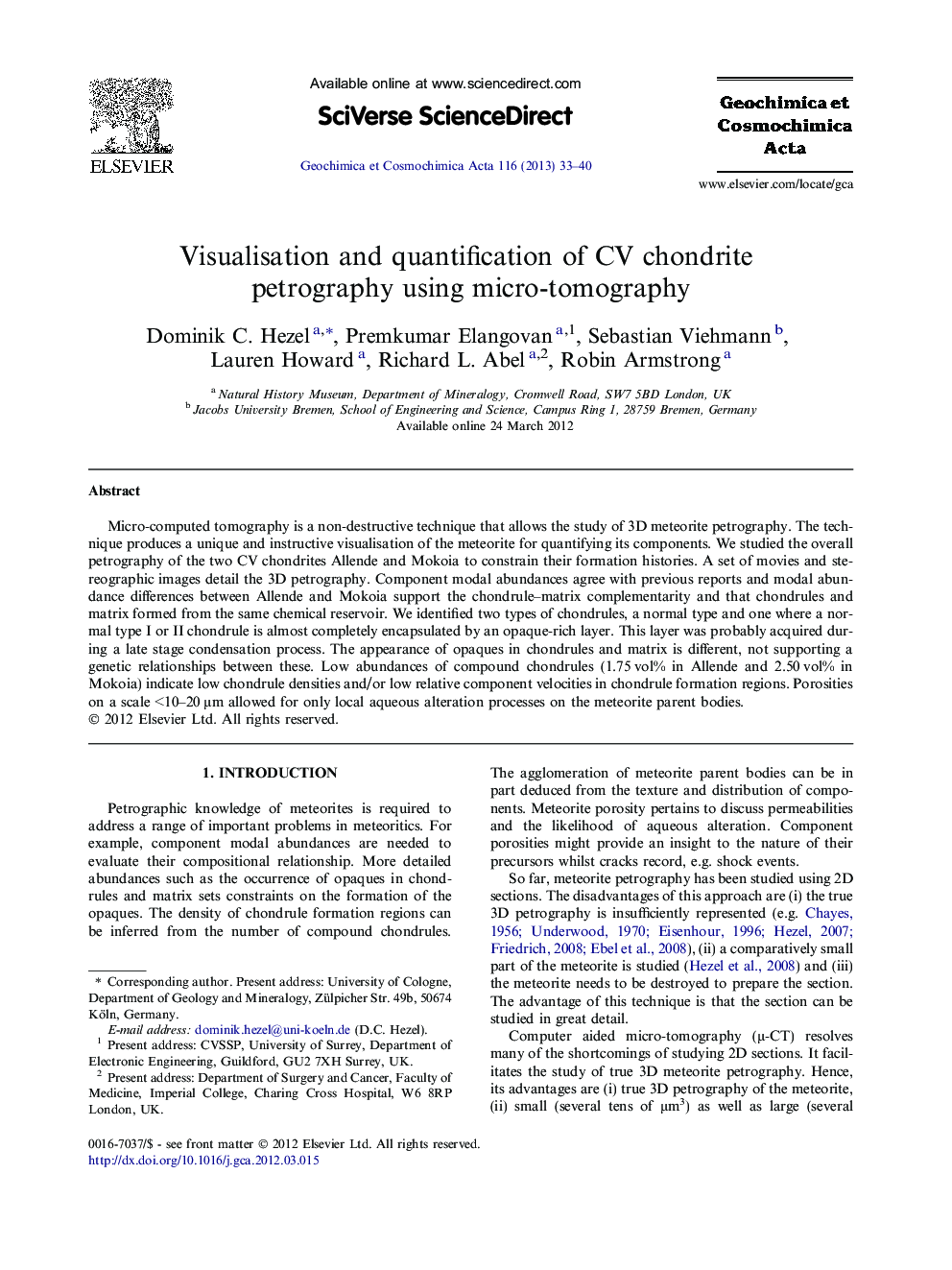| Article ID | Journal | Published Year | Pages | File Type |
|---|---|---|---|---|
| 4702246 | Geochimica et Cosmochimica Acta | 2013 | 8 Pages |
Micro-computed tomography is a non-destructive technique that allows the study of 3D meteorite petrography. The technique produces a unique and instructive visualisation of the meteorite for quantifying its components. We studied the overall petrography of the two CV chondrites Allende and Mokoia to constrain their formation histories. A set of movies and stereographic images detail the 3D petrography. Component modal abundances agree with previous reports and modal abundance differences between Allende and Mokoia support the chondrule–matrix complementarity and that chondrules and matrix formed from the same chemical reservoir. We identified two types of chondrules, a normal type and one where a normal type I or II chondrule is almost completely encapsulated by an opaque-rich layer. This layer was probably acquired during a late stage condensation process. The appearance of opaques in chondrules and matrix is different, not supporting a genetic relationships between these. Low abundances of compound chondrules (1.75 vol% in Allende and 2.50 vol% in Mokoia) indicate low chondrule densities and/or low relative component velocities in chondrule formation regions. Porosities on a scale <10–20 μm allowed for only local aqueous alteration processes on the meteorite parent bodies.
